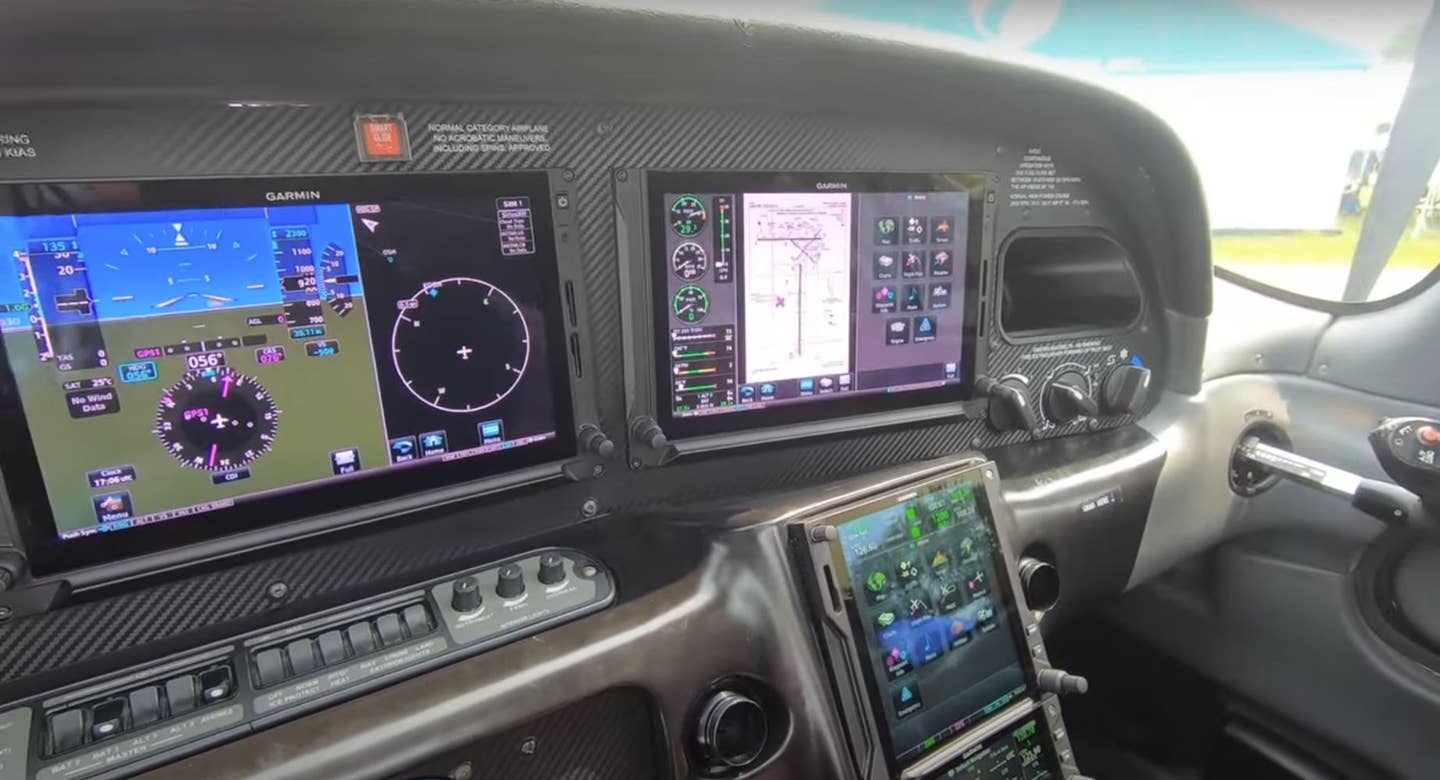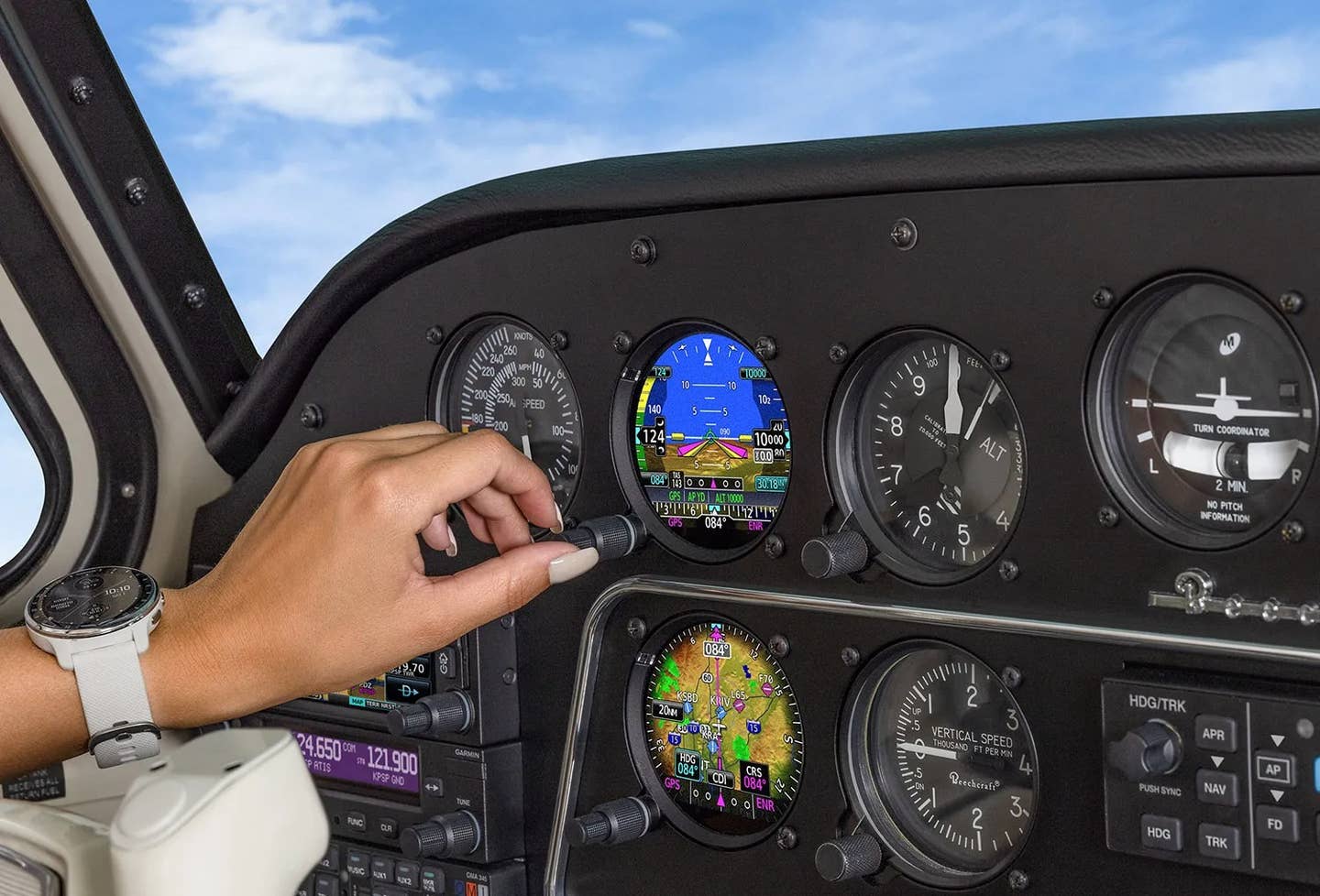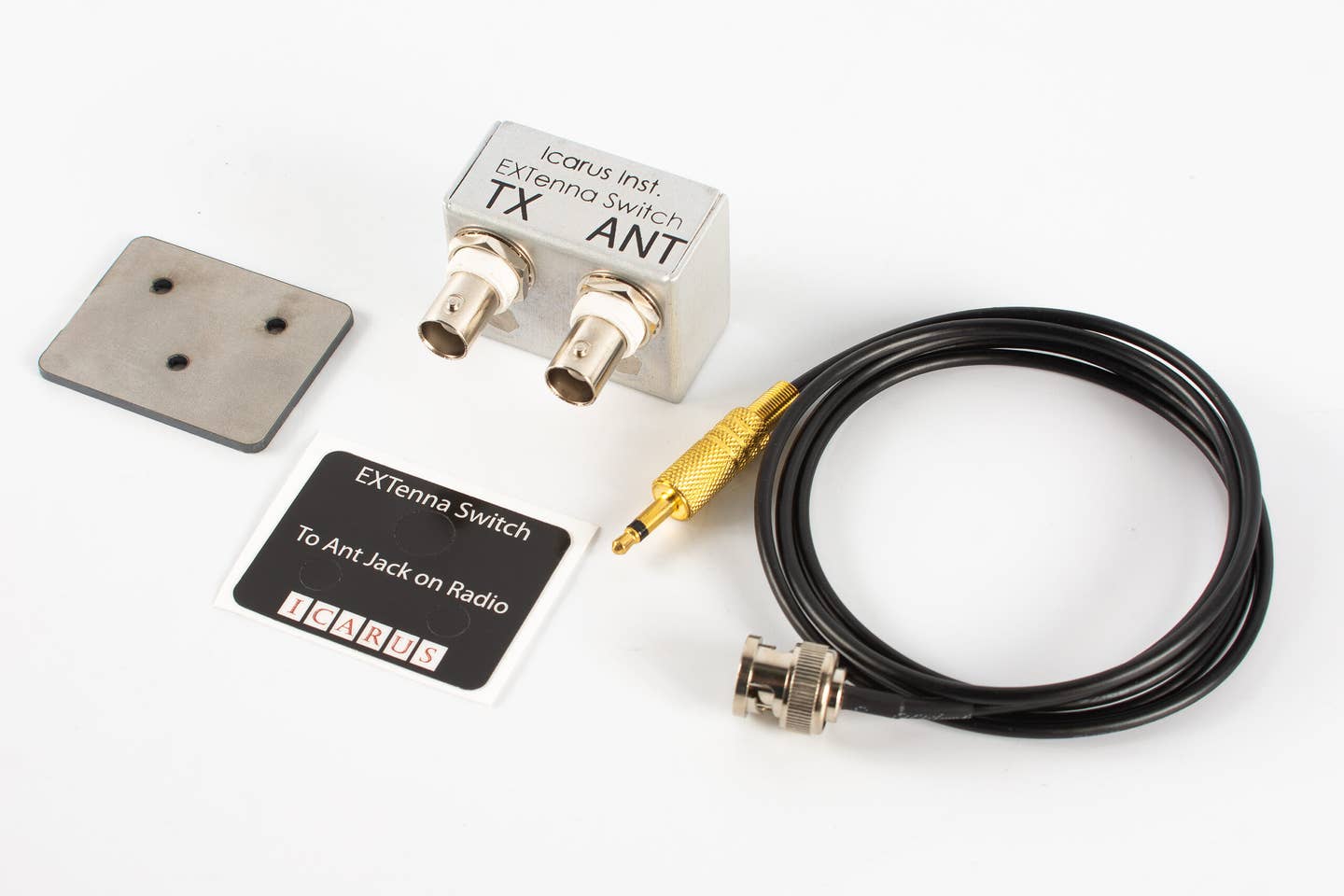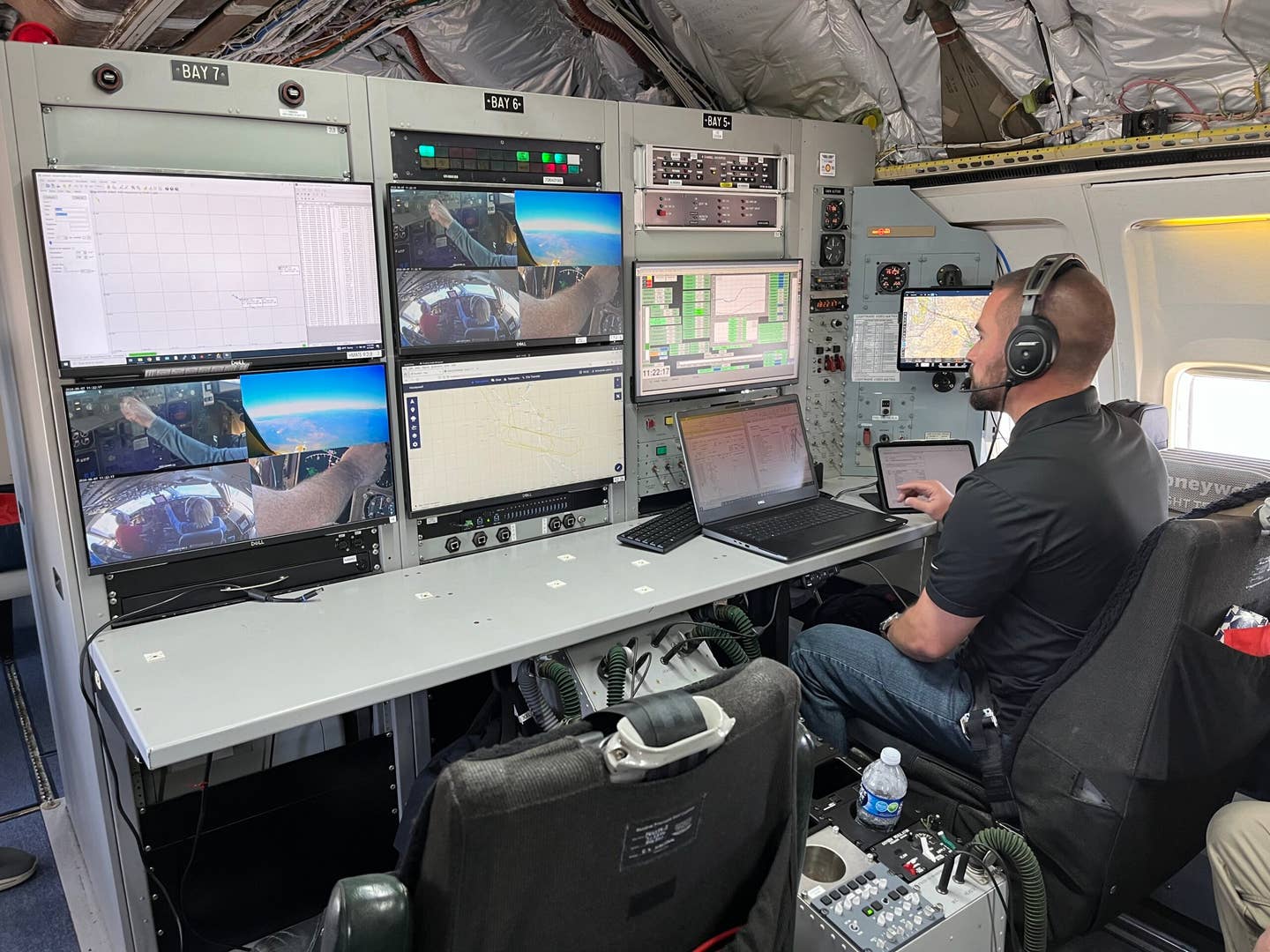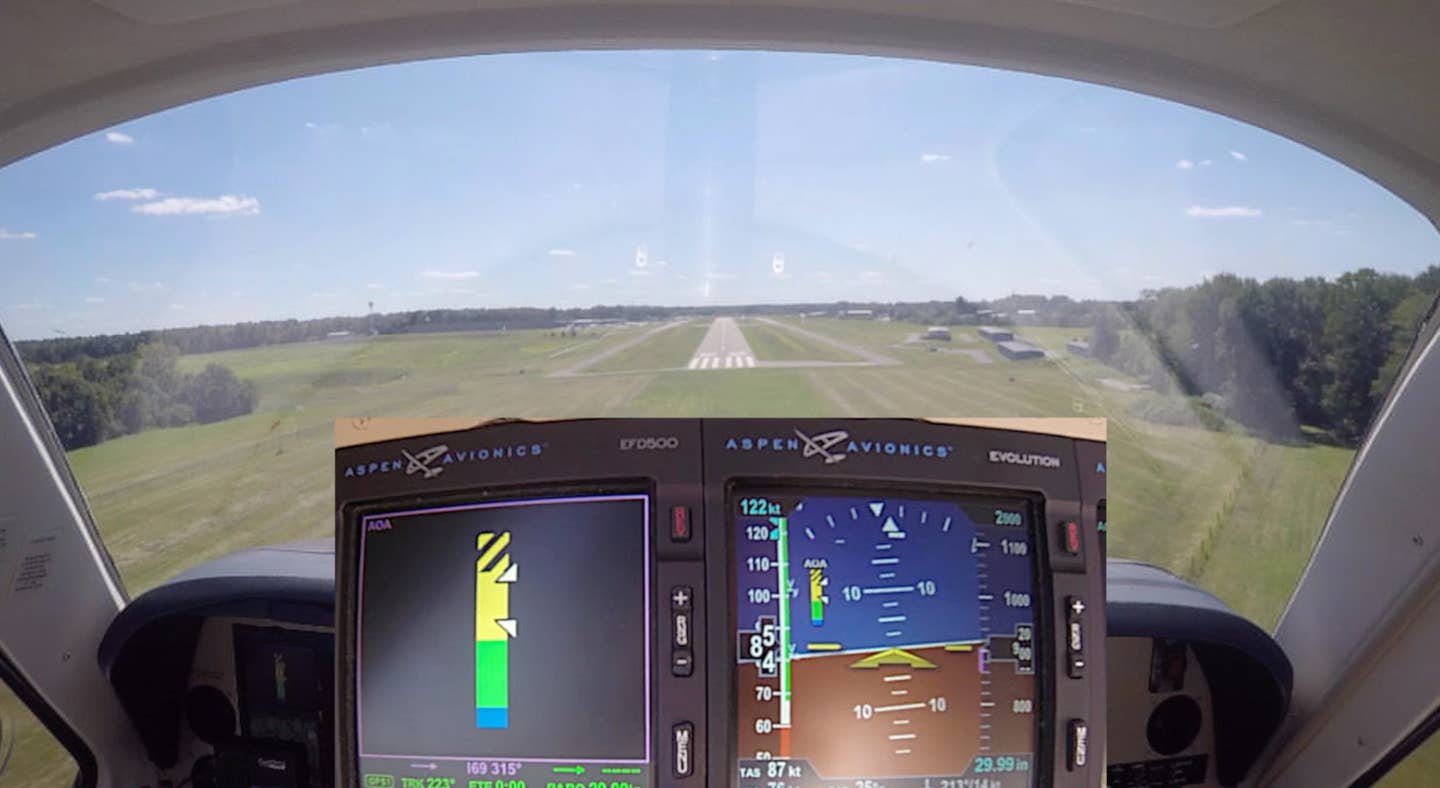
Aspen AOA system Aspen Avionics
Ever since Orville and Wilbur took to the skies, pilots have been taught that the more airspeed you have, the better off you are. But over the last 100-plus years we’ve learned that’s not always the case. Take stalls, for example; the common belief is that if you have sufficient airspeed, the aircraft won’t stall. Sorry, wrong answer.
The fact is an airfoil (wing) always stalls at the same critical angle of attack (AOA) in relation to the relative airflow, regardless of airspeed, configuration or weight.
The only true way to know when you’re flying on the edge is to picture the angle of the chordline of your wing and its relative angle to the flightpath. Call it “stall margin awareness” if you like.
Of course, to make things really interesting changes in the aircraft’s airspeed, weight, bank angle, CG, air temperature and density altitude all play roles in determining your wing’s aerodynamic tipping point. When it comes to precisely when your wing will stall, well you really have no way of knowing.
Sure, the white arc on your airspeed indicator gives you a ballpark estimate of your aircraft’s 1 G stall speed for a given configuration. But if you increase the wing’s bank angle for example, even a “safe” airspeed can suddenly turn into a stall.
Fortunately, a number of leading avionics manufacturers, including Alpha Systems, Aspen Avionics, BendixKing, Garmin, Safe Flight and others, have introduced an array of AOA systems for light general aviation aircraft.
And while all the AOA units are a bit different in how they collect the information, the concept is essentially the same. They use some type of sensor(s) to monitor and display the aircraft’s critical operational parameters — airspeed, bank angle, altitude, thrust and drag — to determine an instantaneous angle of attack reading. (Aspen’s AOA uses information from the Evolution displays ADAHRS to collect all the information available for every phase of flight).
Not all systems monitor all of these parameters. Buyers need to know what information a particular unit does analyze so they know what the system can actually do.
That information is then shown to the pilot on a small, multicolor indicator on the glareshield or instrument panel. Some units also offer an aural tone or automated voice callout when the aircraft is approaching its critical AOA. Without an AOA system, this information is totally invisible to the pilot. But with this increased stall margin awareness you have the information you need to avoid loss of control situations, which, according to the NTSB, currently account for nearly 40 percent of general aviation fatal accidents.
Of course, like any piece of technology in the cockpit, proper operation of any AOA system does require some training and understanding as to what exactly is being displayed for that particular aircraft and flight situation. In addition, every aircraft and system will have specific operating characteristics, so proper system calibration is critical, as is proper installation; units with external sensors may be affected by ice.
Even with their limitations, whether you’re flying off in search of the best $100 hamburger or shooting approaches in the soup, today’s advanced AOA systems are a proven way to deliver information that helps make every flight safer.

Subscribe to Our Newsletter
Get the latest FLYING stories delivered directly to your inbox

